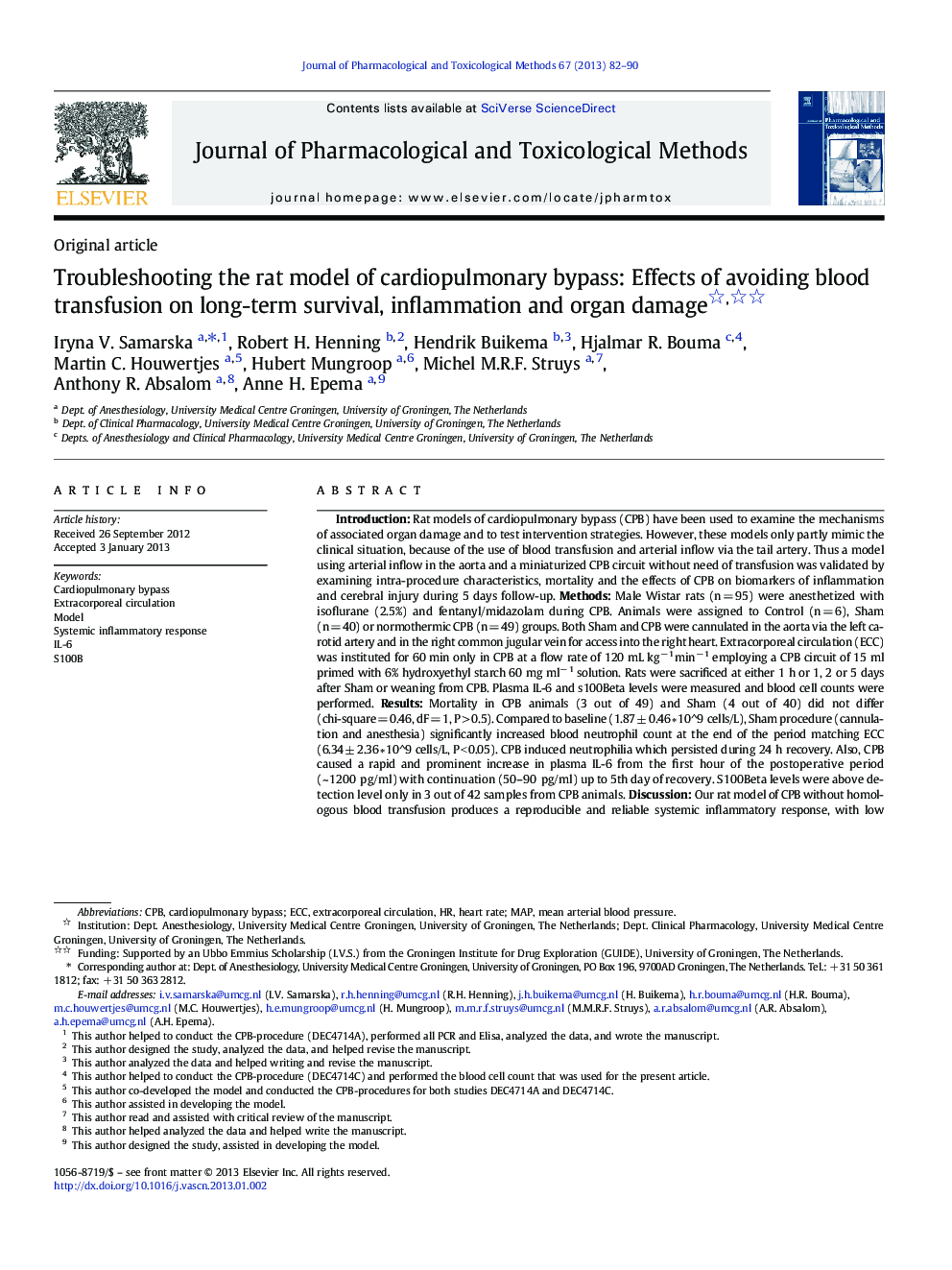| کد مقاله | کد نشریه | سال انتشار | مقاله انگلیسی | نسخه تمام متن |
|---|---|---|---|---|
| 2549209 | 1124507 | 2013 | 9 صفحه PDF | دانلود رایگان |

IntroductionRat models of cardiopulmonary bypass (CPB) have been used to examine the mechanisms of associated organ damage and to test intervention strategies. However, these models only partly mimic the clinical situation, because of the use of blood transfusion and arterial inflow via the tail artery. Thus a model using arterial inflow in the aorta and a miniaturized CPB circuit without need of transfusion was validated by examining intra-procedure characteristics, mortality and the effects of CPB on biomarkers of inflammation and cerebral injury during 5 days follow-up.MethodsMale Wistar rats (n = 95) were anesthetized with isoflurane (2.5%) and fentanyl/midazolam during CPB. Animals were assigned to Control (n = 6), Sham (n = 40) or normothermic CPB (n = 49) groups. Both Sham and CPB were cannulated in the aorta via the left carotid artery and in the right common jugular vein for access into the right heart. Extracorporeal circulation (ECC) was instituted for 60 min only in CPB at a flow rate of 120 mL kg− 1 min− 1 employing a CPB circuit of 15 ml primed with 6% hydroxyethyl starch 60 mg ml− 1 solution. Rats were sacrificed at either 1 h or 1, 2 or 5 days after Sham or weaning from CPB. Plasma IL-6 and s100Beta levels were measured and blood cell counts were performed.ResultsMortality in CPB animals (3 out of 49) and Sham (4 out of 40) did not differ (chi-square = 0.46, dF = 1, P > 0.5). Compared to baseline (1.87 ± 0.46 ∗ 10^9 cells/L), Sham procedure (cannulation and anesthesia) significantly increased blood neutrophil count at the end of the period matching ECC (6.34 ± 2.36 ∗ 10^9 cells/L, P < 0.05). CPB induced neutrophilia which persisted during 24 h recovery. Also, CPB caused a rapid and prominent increase in plasma IL-6 from the first hour of the postoperative period (~ 1200 pg/ml) with continuation (50–90 pg/ml) up to 5th day of recovery. S100Beta levels were above detection level only in 3 out of 42 samples from CPB animals.DiscussionOur rat model of CPB without homologous blood transfusion produces a reproducible and reliable systemic inflammatory response, with low mortality rates on long term follow up. The model more closely mimics the human situation in respect to arterial inflow site and avoidance of blood transfusion. Thus, our CPB model is suitable to study its influence on systemic inflammation, ischemia–reperfusion injury, microcirculation and vascular dysfunction in vivo, and to evaluate potential therapeutic interventions.
Journal: Journal of Pharmacological and Toxicological Methods - Volume 67, Issue 2, March–April 2013, Pages 82–90